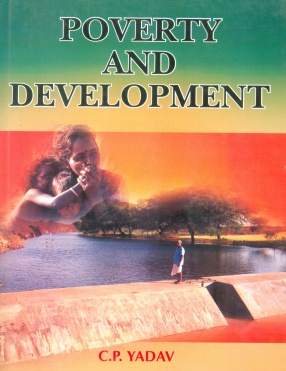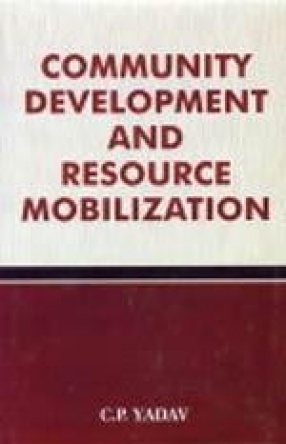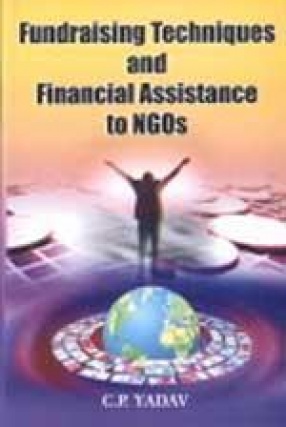
C.P. Yadav

Showing all 14 books









There are about 1000 Hindu lower castes registered as scheduled castes in India. Some of the castes number several million members each. The largest of these castes are Chamar, Bhangi, AdiDravida, Pasi, Madiga, Dusadh, Mali, Parayan, Koli, Mahar and others. Each Indian state has its own list of Scheduled Castes. One of the prime conditions for overcoming casteism in the socio-political life of India is the growth of the democratic secular movement with the ...

Globalization has presented new challenges for the realization of the goal of women's equality, the gender impact of which has not been systematically evaluated fully. However, from the micro level studies that were commissioned by the department of women and child development, it is evident that there is a need for reforming policies for access to employment and quality of employment. Benefits of the growing global economy have been unevenly distributed leading ...

In the decades since Independence, India has made progress in terms of improvements in basic social indicators such as health, nutrition and education-life expectancy has nearly doubled, infant mortality has been halved and literacy rates have risen. However, a considerable proportion of the population still lives in conditions of extreme poverty. The majority of the poor in India are landless agricultural workers. The incidence of poverty is also linked to ...

The changing role of financial management in the next millennium will be most visible in these five areas: Corporate value integration; creation of virtual corporation; real time reporting; treasury and risk management; change catalyst. The reforms process has changed the perception of the financial markets towards business enterprises and the business philosophy of the managements themselves. One perceptible change is a better-calibrated market evaluation of ...

rightest spots in India's economic performance in recent years has been the emergence of knowledge-based industries as front-runners in the global market place. The early successes of the software sector are being replicated in a number of other activities such as Business Process Outsourcing (BPO), bio-technology, pharmaceuticals, industrial design, tertiary health-care, etc. There is vast potential in these activities but it is clear that a number of other ...

'Gender Equality' is much debated issue in almost all the countries of the world. It is more relevant in the context of developing countries where maltreatment and exploitation of women has been tradition which goes on unabated. In India women's condition are deplorable. The foeticide of girls is becoming a frequent phenomenon. As such gender-ratio has dwindled badly. Whether in tribal, poor or rich families women are worst sufferers. Though, we may boast of ...

At the beginning of the new millennium, more than 88 crore adults in the world were illiterate, about 11 crore children were not going to school, discrimination against women and girls was common, and quality of learning for crores of children and adults was not satisfactory. In April 2000, representatives of 164 countries, including India, met in a conference of the World Education Forum at Dakar, Senegal, to discuss and consider these issues. This document ...

HIV (Human Immunodeficiency Virus) is a virus that causes AIDS (Acquired Immunodeficiency Syndrome), a health condition in which a person is affected by a series of diseases because of poor immunity. HIV by itself is not an illness and does not instantly lead to AIDS. An HIV infected person can lead a healthy life for several years before s/he develops AIDS. As the name, Acquired Immunodeficiency Syndrome indicates, AIDS is a health condition that results from ...

Trafficking of humans involves moving men, women and children from one place to another and placing them in conditions of forced labour. The practice includes forced sex work, domestic servitude, unsafe agricultural labour, sweet-shop labour, construction or restaurant work, and various forms of modern day slavery. This global violation of human rights occurs within countries and across borders, regions and continents. Trafficking has been defined by the UN ...

Considering the size and diversity of the country it was felt that information regarding children's rights could be usefully disseminated through state level workshops. Eleven such workshops were held at Jaipur, Calcutta, Lucknow, Hyderabad, Bangalore, Pune, Jabalpur, Patna, Ahmedabad, Bhubaneswar and Chandigarh in the course of 1994. These state workshops have created broad awareness of children's rights, reflected in editorials and news reports in the ...

Revival of rural consumption demand was expected to contribute to investment expansion, but this would only happen over time if agricultural growth targets were met. Exports were unlikely to provide adequate demand support due to depressed international market conditions. Moving into a high growth trajectory from this base level situation therefore required a sustained demand impetus from public expenditures, especially public investment, even if it required some ...

The social problems of contemporary India are the result of a complex nexus between the factors of exclusion and inclusion rooted in history, values and cultural ethos. Many of these problems based on the policy of segregation have not been addressed by the development strategy launched since Independence. India has the distinction of having the first Sub-National State Human Development Report (SHDR) for the state of Madhya Pradesh in 1995. Since then, the State ...
